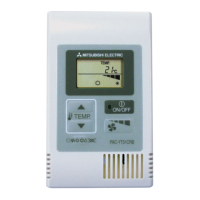11 TROUBLESHOOTING
11.3 Troubleshooting by Symptom
125
11
11.3 Troubleshooting by Symptom
This section describes troubleshooting by symptom.
Perform troubleshooting by symptom when the IO-Link module does not operate properly even though no errors exist on the
IO-Link module. If an error occurs on the IO-Link module, identify the cause of the error using the engineering tool.
When process data cannot be written in IO-Link mode
Check item Action
Is Remote READY (RWr0.b11) on? Check that Operating condition setting request flag (address: 2D07H) is off. If
Operating condition setting request flag (address: 2D07H) is on, turn it off and
check that Remote READY (RWr0.b11) is on.
Page 155 Remote READY (RWr0.b11)
IS CH IO-Link device connection status flag (RX20 to RX27) on? Reconnect the IO-Link device properly.
For IO-Link device connection methods, refer to the following.
Page 39 Wiring of IO-Link terminal block and external devices
Are there any IO-Link device parameter downloading failure events in the
event history?
Reconnect the IO-Link device connected to the channel in which the IO-Link
device parameter downloading failure event occurred.
Are there any IO-Link device parameter uploading failure events in the event
history?
Reconnect the IO-Link device connected to the channel in which the IO-Link
device parameter uploading failure event occurred.
Are there any IO-Link device access failure events in the event history? Check that the data storage function of the IO-Link device is not locked,
referring to the IO-Link device manual. If it is locked, unlock it and reconnect
the IO-Link device.
Are there any data storage buffer overflow events in the event history? Reconnect the IO-Link device that sends parameters of a size compliant with
the IO-Link standards to the channel in which the data storage buffer overflow
event occurred.
Is CH Input data invalid flag (RX8 to RXF) off? Check whether a channel error has occurred.
Refer to the manual of the IO-Link device connected to that channel and
eliminate the error.
Also, check whether Device replacement status (address: 299DH) is off.
If Device replacement status (address: 299DH) is on, specify the relevant
channel in "Write Value" of "Device Changeout Complete" of "Command
Execution of Slave Station".
Page 99 Device Replacement Function
Is Device replacement status (address: 299DH) off? Input and output are disabled during device replacement.
Specify the relevant channel in "Write Value" of "Device Changeout Complete"
of "Command Execution of Slave Station".
Page 99 Device Replacement Function
Is the channel in the correct operation mode? Set "Operation Mode" of the channel to "1: IO-Link(Standard)Mode" or "2: IO-
Link(Sync Input)Mode" depending on the mode of the connected IO-Link
device.
Is the swap function set correctly? Set "Byte Position Swap" to "1: Enabled" or "0: Disabled" according to
application requirements.
Is the bit segment function set correctly? Set "Bit Slicing Setting" correctly.
Is the refresh device set correctly? Check the refresh parameter and correct the setting of the refresh device so
that it matches with the setting in the program. For the setting of the refresh
parameters, refer to the following.
User's manual for the master/local module used
Is the output process data written to the remote register? Write the output process data to CH output process data (RWw4 to RWw83)
on the engineering tool monitor.
Is CH Output data valid flag (RY8 to RYF) on? After writing the output process data to CH Output process data (RWw4 to
RWw83), turn on CH Output data valid flag (RY8 to RYF).

